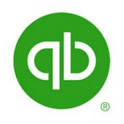Course Overview
Candidates will be introduced to QuickBooks primary features as well as the new features and functionality of this version. At course completions, students will be able to: - Set up a company - Work with lists - Set up inventory - Sell your product - Invoice for services - Process payments - Work with bank accounts - Enter and pay bills - Use the EasyStep Interview

Getting Started
Starting QuickBooks
Setting QuickBooks Preferences
Identifying Components of the QuickBooks Operating Environment
The QuickBooks Home Page
The Company Snapshot
Getting Help with QuickBooks
Identifying Common Business Terms
Setting Up QuickBooks in Multi-User Mode
Updating QuickBooks
Backing Up and Restoring a Company File
Exiting QuickBooks
Setting up a Company
QuickBooks Company
Using the Chart of Accounts
Setting Up a Password
Setting a Closing Date
Working with Lists
Creating Company Lists
Working with the Customers & Jobs List
Working with the Employees List
Working with the Vendors List
Working with the Items List
Working with Other Lists
Managing Lists
Setting up Inventory
Entering Products into Inventory
Ordering Products
Receiving Inventory
Paying for Inventory
Manually Adjusting Inventory
Selling Your Product
Creating Product Invoices
Applying Credit to Invoices
E-mailing Invoices
Setting Price Levels
Making Cash Sales
Invoicing for Services
Setting Up a Service Item
Changing the Invoice Format
Creating a Service Invoice
Editing an Invoice
Voiding an Invoice
Deleting an Invoice
Entering Statement Charges
Creating Billing Statements
Paying for expenses
Displaying the Open Invoices Report
Using the Collections Centre
Receiving Payments for Invoices
Making Deposits
Handling Bounced Checks
Working with Bank Accounts
Writing a QuickBooks Check
Voiding a QuickBooks Check
Using Bank Account Registers
Entering a Handwritten Check
Transferring Funds between Accounts
Reconciling Checking Accounts
Entering and Paying Bills
Handling Expenses
Using QuickBooks for Accounts Payable
Entering Bills
Paying Bills
Entering Vendor Credit
QuickBooks - Fundamentals Duration: 1 Day
Course Overview
Candidates will be introduced to QuickBooks primary features as well as the new features and functionality of this version. At course completions, students will be able to: - Set up a company - Work with lists - Set up inventory - Sell your product - Invoice for services - Process payments - Work with bank accounts - Enter and pay bills - Use the EasyStep Interview

Getting Started
Starting QuickBooks
Setting QuickBooks Preferences
Identifying Components of the QuickBooks Operating Environment
The QuickBooks Home Page
The Company Snapshot
Getting Help with QuickBooks
Identifying Common Business Terms
Setting Up QuickBooks in Multi-User Mode
Updating QuickBooks
Backing Up and Restoring a Company File
Exiting QuickBooks
Setting up a Company
QuickBooks Company
Using the Chart of Accounts
Setting Up a Password
Setting a Closing Date
Working with Lists
Creating Company Lists
Working with the Customers & Jobs List
Working with the Employees List
Working with the Vendors List
Working with the Items List
Working with Other Lists
Managing Lists
Setting up Inventory
Entering Products into Inventory
Ordering Products
Receiving Inventory
Paying for Inventory
Manually Adjusting Inventory
Selling Your Product
Creating Product Invoices
Applying Credit to Invoices
E-mailing Invoices
Setting Price Levels
Making Cash Sales
Invoicing for Services
Setting Up a Service Item
Changing the Invoice Format
Creating a Service Invoice
Editing an Invoice
Voiding an Invoice
Deleting an Invoice
Entering Statement Charges
Creating Billing Statements
Paying for expenses
Displaying the Open Invoices Report
Using the Collections Centre
Receiving Payments for Invoices
Making Deposits
Handling Bounced Checks
Working with Bank Accounts
Writing a QuickBooks Check
Voiding a QuickBooks Check
Using Bank Account Registers
Entering a Handwritten Check
Transferring Funds between Accounts
Reconciling Checking Accounts
Entering and Paying Bills
Handling Expenses
Using QuickBooks for Accounts Payable
Entering Bills
Paying Bills
Entering Vendor Credit



